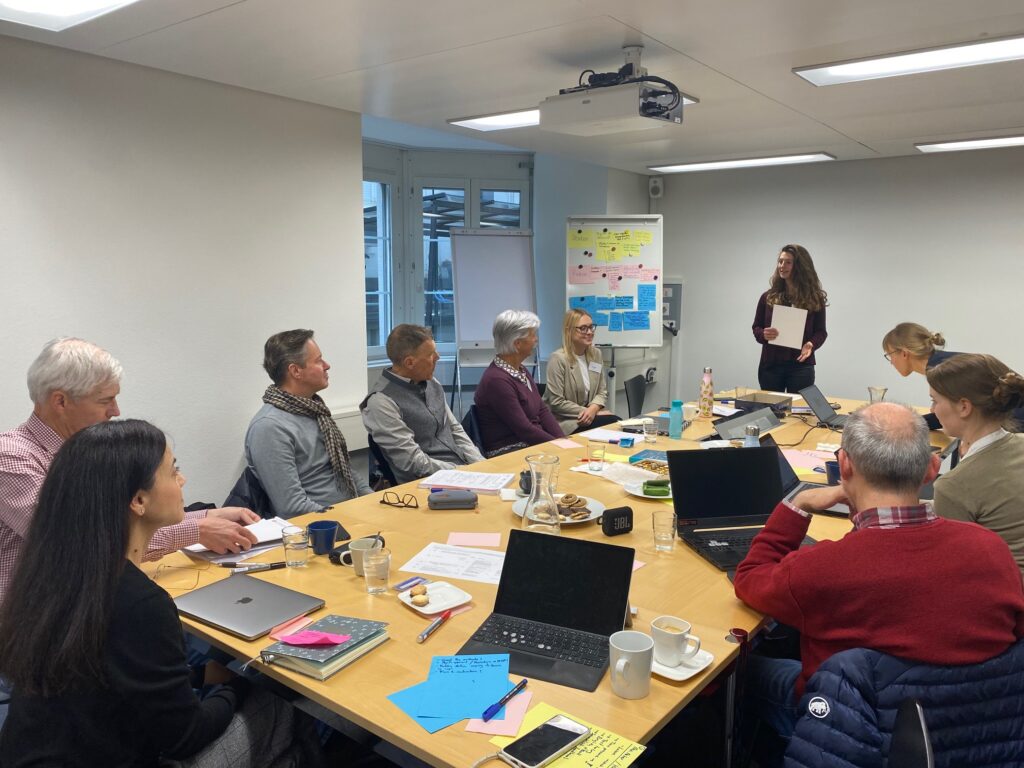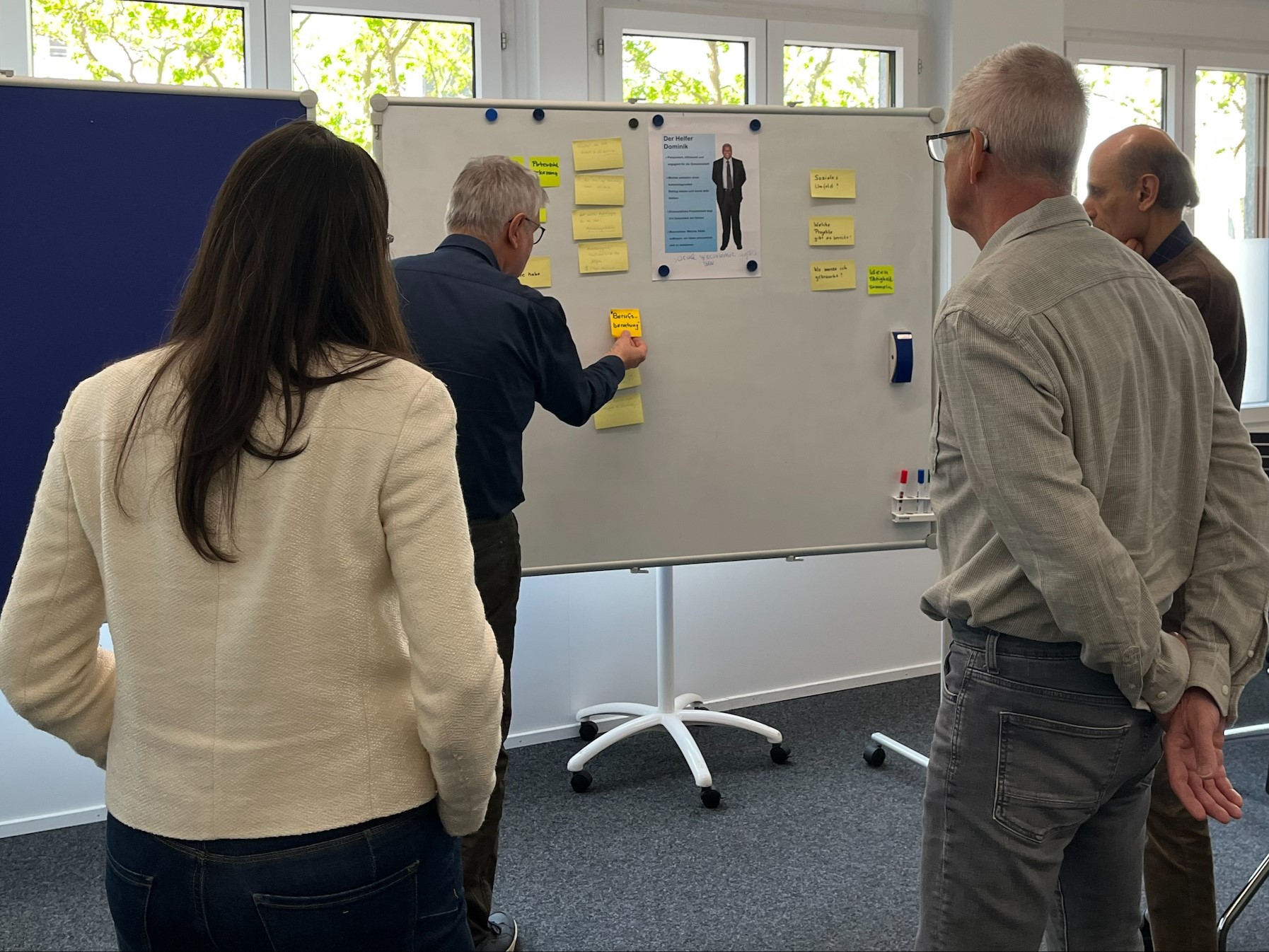Co-development: learning and creating together
Co-development is a collaborative approach to developing products and services in which end users are actively involved in the entire design, development and evaluation process. The approach promises that the solutions developed are better tailored to the actual needs of users, as they contribute their perspectives and experiences from the very beginning. Innovations, such as digital technologies, can be made more user-friendly, accessible and relevant through co-development.
Steps in co-development
- Needs assessment: In the first step, users help to identify specific challenges or needs in their everyday lives. Their feedback helps designers to focus on real problems instead of hypothetical assumptions. Empathy and genuine interest in the users’ perspectives are crucial here.
- Concept creation: Based on the identified needs, the team develops ideas and potential solutions. This phase includes brainstorming, sketching and creating initial concept drafts.
- Prototype testing and iteration: In this phase, users test prototypes and provide feedback on aspects such as functionality, user-friendliness and convenience. The focus is on iterative improvements, with user feedback continuously guiding the development process.
- Development and evaluation: The final product is developed and evaluated based on the collected feedback. The focus here is on meeting technical, user-friendly and accessible standards. Repeated feedback loops ensure that long-term user experiences and suggestions for improvement are incorporated.

Product development “with” or “for” older adults?
Despite the advantages of co-development, older adults are often not or only insufficiently involved in development processes. Products are often created “for” rather than “with” the target group, which can lead to key needs being overlooked and products hardly being used. A recent overview study shows that older people are often only involved in the development of digital technologies for final product tests – if at all. In addition, preference is often given to younger, active, healthy or tech-savvy people, which means that the range of needs and perspectives is not fully represented (Mannheim et al., 2023).
Why we use co-development
We also rely on co-development in our projects. Our aim is to take the voices of older adults into account throughout the entire development process. This allows us to design educational programs that are not only created “for” but “with” the learners. We see ourselves as learners and the participants as active co-creators.
An example from our work
One specific example from our work is the “Innovation and Entrepreneurship” course. The starting point was an existing course on design thinking methods, which we tested with an initial group of older learners. Their feedback on methods, content and potential for improvement helped us to further develop the course. We gained valuable insights through interviews and asked questions such as: “Which methods help you? What works well? Where is there room for improvement?”
With a second group, these insights were further deepened in workshops, but above all the curriculum of the course was designed together. The result of this process was the first prototype: the first two modules of our e-learning course.
The next step is now the practical test: In February 2025, we plan to evaluate these two modules with a third group of older learners. Recruitment for this test group has already begun. Are you interested in being part of this exciting project? Then get in touch with us – we look forward to your participation!


Challenges
For us, too, a key challenge in co-development processes is to involve as heterogeneous a user group as possible. Participants are often tech-savvy and have previous experience in e-learning, which can limit the diversity of perspectives.
In addition, unconscious age stereotypes can influence the process – both among the design teams and among older adults themselves. These biases and stereotypes influence perceptions and design decisions and can lead to premature rejection of certain ideas or inadequate recognition of needs.
Conclusion
Co-development offers great potential to better adapt products and services to the actual needs of users. It is crucial that all participants – regardless of age or background – are seriously and consistently involved. Our experience shows that consistent collaboration at eye level not only delivers better results, but also enriches the participants themselves.
References
Leask, C. F., Sandlund, M., Skelton, D. A., Altenburg, T. M., Cardon, G., Chinapaw, M. J. M., De Bourdeaudhuij, I., Verloigne, M., & Chastin, S. F. M. (2019). Framework, principles and recommendations for utilising participatory methodologies in the co-creation and evaluation of public health interventions. Research Involvement and Engagement, 5(1), 2. https://doi.org/10.1186/s40900-018-0136-9
Mannheim, I., Wouters, E. J. M., Köttl, H., Van Boekel, L. C., Brankaert, R., & Van Zaalen, Y. (2023). Ageism in the Discourse and Practice of Designing Digital Technology for Older Persons: A Scoping Review. The Gerontologist, 63(7), 1188–1200. https://doi.org/10.1093/geront/gnac144
Mazuz, K., & Biswas, S. (2022). Co-designing technology and aging in a service setting: Developing an interpretive framework of how to interact with older age users. Gerontechnology, 21(1), 1–13. https://doi.org/10.4017/gt.2022.21.1.475.03
Sumner, J., Chong, L. S., Bundele, A., & Wei Lim, Y. (2021). Co-Designing Technology for Aging in Place: A Systematic Review. The Gerontologist, 61(7), e395–e409. https://doi.org/10.1093/geront/gnaa064
The images used are from www.freepik.com.
